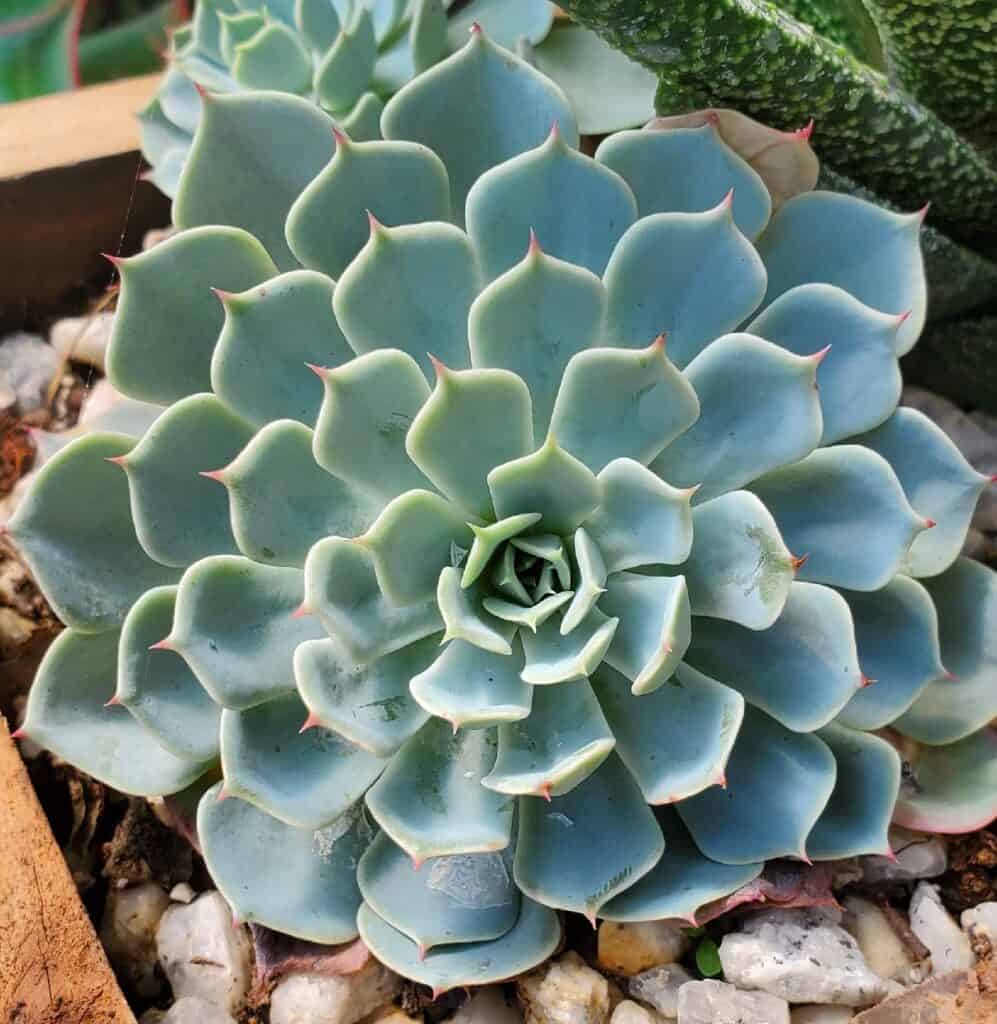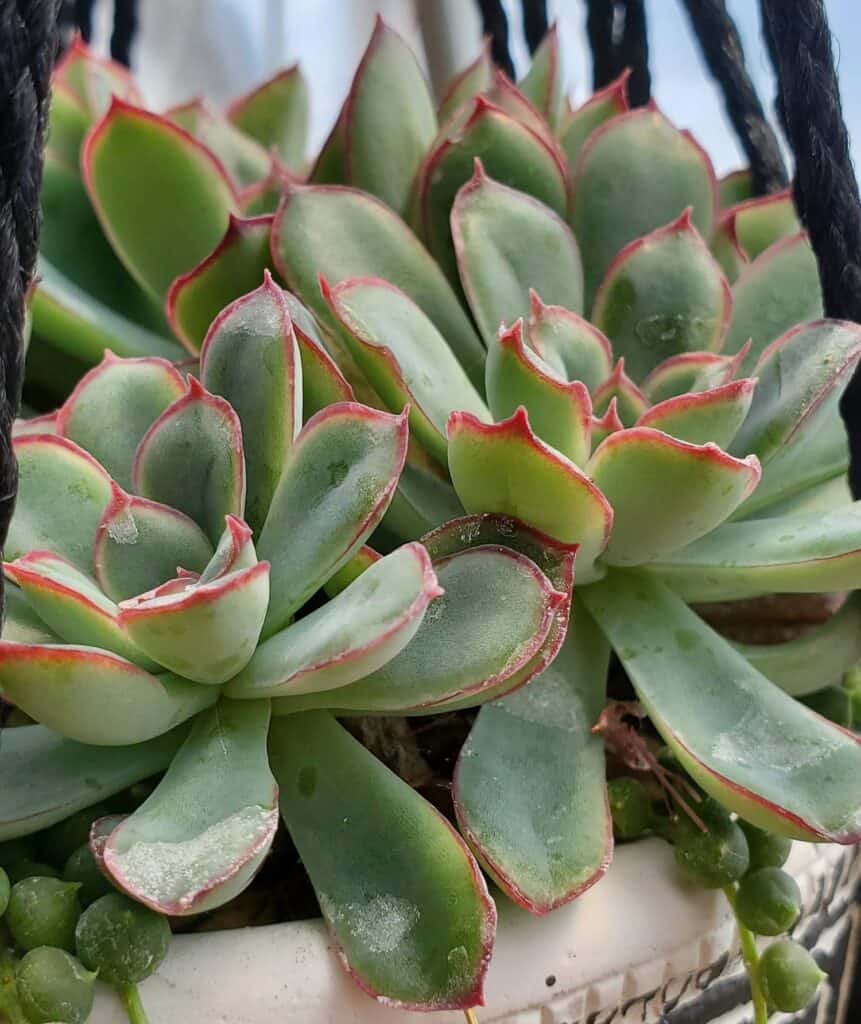How to Fertilize Succulents (A Complete Guide)
I absolutely love shopping online for succulents and gardening supplies. If you aren't already saving money by comparing prices online, give it a try! Here are six of my favorite things that I have purchased online as I build my own succulent oasis:
Some of my first few succulents died (there, I said it). At first, I thought it made me a royal succulent failure. But then I realized that succulents are a little different when it comes to care, and that’s when I started doing my research.
One of the most important things I learned is that succulents need fertilizer. And not just any old fertilizer, but one specifically designed for succulents with the right ratio of nutrients.
If you’re like most succulent enthusiasts, you probably want your succulents to be as healthy and beautiful as possible. And one of the best ways to achieve this is by fertilizing them regularly.
Now that I know how to care for succulents, I’m going to share everything you need to know about succulent fertilizer: what it is, how often to use it, the best types to use, and more. Learn how to give your succulents the nutrients they need so that they can grow faster and bigger!
What Is Succulent Fertilizer?
Just like any other type of plant, succulents need nutrients to grow. These nutrients are found in the soil, but over time they can become depleted. Fertilizer is a way to replenish the nutrients in the soil so that your succulents can continue to grow strong and healthy. There are different types of succulent fertilizer, but they all contain some combination of these essential nutrients:
– Nitrogen: helps with leaf, stem, and root growth
– Phosphorus: promotes photosynthesis and protein synthesis
– Potassium: strengthens the plant and helps move water throughout
Related: Best Full Sun Succulents
Do Succulents Need Fertilizer?
The short answer is yes! Succulents need fertilizer to grow healthy and strong. The only real way to skip the fertilizer is to repot your succulent with fresh, nutrient-rich soil. Depending on how many succulents you own, repotting them with well-draining soil can take much longer and be more expensive than simply adding fertilizer to the existing pot.
While succulents are known for being low-maintenance plants, they still need some TLC to thrive. One of the best ways you can show your succulents some love is by giving them a regular dose of fertilizer.
Fertilizer provides succulents with the nutrients they need to grow, and it can also help them resist disease. If you want your succulents to look their best, then fertilizer is a must.
Related: How to Fix a Leggy or Tall Succulent in Three Simple Steps
How to Fertilize Succulents Step by Step

There is no one-size-fits-all approach when it comes to fertilizing succulents, but in general, it’s good to know what you’re in for before you take on a new project.
Step 1: Identify Your Succulents
You need to know what kind of succulent you have and what season it’s actively growing before you fertilize it. If your succulent is looking a little sad, it could possibly be dormant, and therefore it’s expected to look a little dull during this time. You don’t want to fertilize or overwater your succulent during its dormancy because it could cause root rot or burns.
Step 2: Choose a Succulent Fertilizer
If you want your succulents to really thrive, it’s important to use the right type of fertilizer. While there are many different succulent fertilizers on the market, not all of them are created equal. In general, you want to look for a fertilizer that has an equal amount of nitrogen, phosphorus, and potassium. This ratio will help your succulent grow strong and healthy.
You can find succulent fertilizer at your local nursery or garden center, or you can order it online. Make sure to read reviews because plant owners often share stories on how their succulents reacted to the product. You can potentially avoid a problem just by listening to what others have to say.
There are different options when it comes to fertilizing your succulents. These fertilizers have some of the best reviews among succulent owners online.
– Osmocote Plus Smart-Release Plant Food
– Cute Farms Succulent, Cacti, & Aloe Fertilizer
Step 3: Fertilize Your Succulent
After you’ve chosen one, it’s time to fertilize your succulent. The best way to do this is by following the instructions on the fertilizer label. This will ensure that you’re using the right amount of fertilizer for your succulent.
If you’re using a liquid fertilizer, you can either mix it into the succulent’s potting mix or water it directly onto the soil. If you’re using a fertilizer spike, simply insert it into the succulent’s potting mix.
Related: How to Choose the Right Pot for Your Succulent
More Questions New Succulent Owners are Asking About Fertilizers

It’s never bad to overprepare before fertilizing your succulents. Here are a few more questions to consider before getting started.
When should I fertilize my succulents?
The best time to fertilize your succulents is in the spring, right before they start actively growing, and then every two to four weeks throughout the season. This will give them the nutrients they need to grow strong and healthy leaves and stems.
While it’s not as common, keep in mind that some succulents actively grow during the cold season. Make sure to identify your plants and research their specific needs before deciding when to fertilize them.
Can I use an all-purpose plant food for succulents?
Yes, you can use an all-purpose plant food for succulents. However, succulents are a kind of cactus and therefore require fewer nutrients than other plants. This means you should dilute the all-purpose plant food before using it on your succulents.
It’s also a good idea to research the best succulent fertilizer for your specific plant because some all-purpose plant foods have high levels of phosphorus, which can actually harm succulents. You’ll want to use one that has an equal ratio of nitrogen, phosphorus, and potassium.
Related: Why Are the Tips of My Succulents Turning Red?
How often should I fertilize my succulents?
The frequency of fertilizer depends on the type of succulent you have, the time of year, and the type of fertilizer you’re using. It can even change based on whether your succulent is outdoor versus indoor, or in a pot versus in the ground.
Succulents that are actively growing (during the spring and summer) will need to be fertilized while those that are dormant (in the fall and winter) do not. As a general rule of thumb, succulents should be fertilized every two to four weeks during the growing season and not at all during the dormant season. Of course, you should always follow the instructions on your fertilizer label for the best results.
Related: How to Propagate Succulents from Leaves, Stems, and Cuttings
Alternative DIY Succulent Fertilizer Ideas
While I’d love to say that it’s best to “do it yourself,” that’s not always true. Succulents are extremely sensitive when it comes to their fleshy leaves, so be extra careful when trying to fertilize them with alternative methods. These are some generally safe DIY fertilizers for succulents to consider, just make sure to dilute them and avoid overwatering your succulents.
Worm Castings
Worm castings are an excellent source of nitrogen for succulents. They also help improve drainage and aeration in the potting mix. You can find worm castings for succulents at your local nursery or garden center, or you can order them online. They are not necessarily a complete replacement for fertilizer but can keep your succulents growing strong until you repot them in fresh, nutrient-dense soil.
Compost Tea
Compost tea is another great DIY fertilizer for succulents. It’s made by steeping compost in water for at least 48 hours. This process extracts all the nutrients from the compost, which can then be used to fertilize succulents. Simply fill a 5-gallon bucket with water and add the contents of your compost bin into the water. After a couple of days, strain the compost out of the water and then use the strained water to both hydrate and fertilize your succulents.
Coffee Grounds
Coffee grounds are a great source of nitrogen for succulents. They also help improve drainage and aeration in the potting mix. To use coffee grounds as a fertilizer, simply mix them into the succulent’s potting mix or top-dress the soil with them.
Eggshells
Eggshells are an excellent source of calcium for succulents. Simply rinse any egg residue off of your eggshells and set them aside. On the night before watering day, add the shells into a container of boiling water. Strain them out the following morning and use the water to hydrate your succulents.
Banana Peels
Banana peels are a great source of potassium for succulents. Save your peels after eating the banana. To use banana peels as a fertilizer, simply add them to a jar or pan of boiling water. Allow them to seep for 48 hours before straining the water and using it to water your succulents.
Rainwater
Rainwater is an excellent, natural source of nutrients for succulents. You can collect rainwater in a rain barrel or simply let it collect in a bucket during a rainstorm. If you have a spring that drains rainwater after a storm, collect the water for your succulents.
Keep Your Succulents Happy and Healthy
There are so many ways to fertilize your succulents. The most important thing is to research your specific plant and find what works best for it. If you’re in doubt, start by diluting the fertilizer to see how your succulent reacts to it.
Succulents need fertilizer because it provides them with the nutrients they need to grow. Fertilizer also helps succulents resist disease and sometimes pests. If you want your succulents to look their best, then fertilizer is a must.
Related: How to Get Rid of Mealybugs: A Step-By-Step Guide
